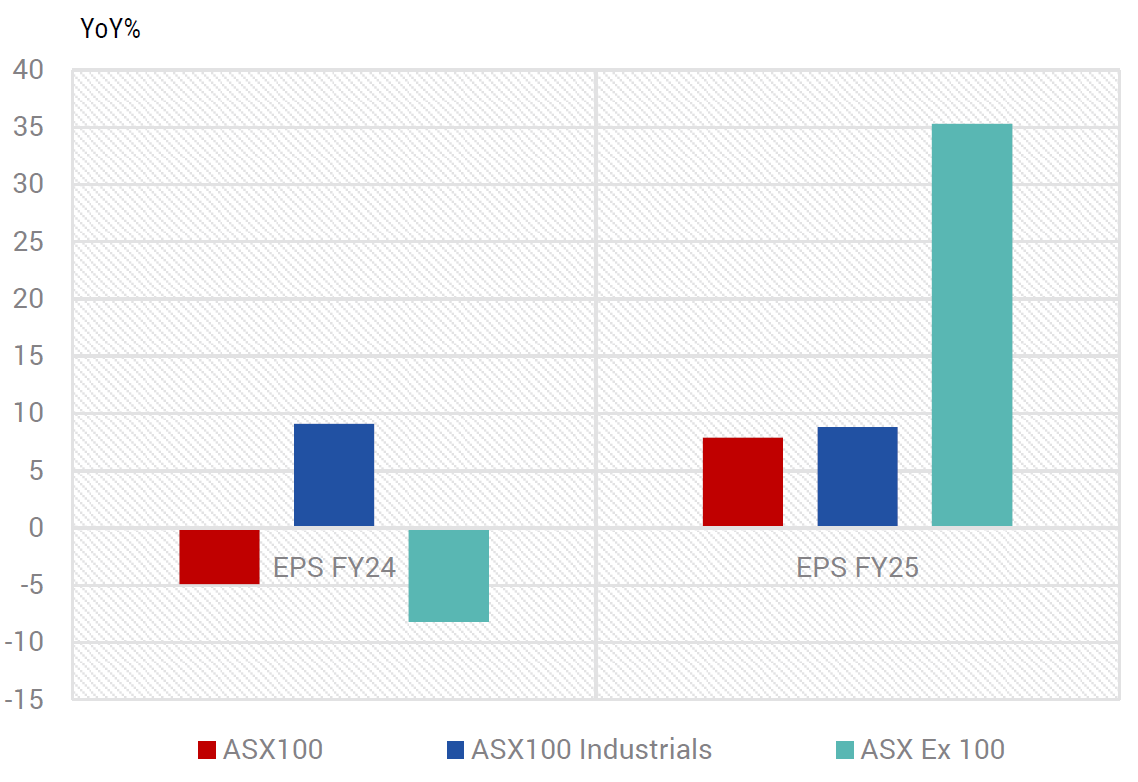805 days down (and counting)
Many people have marvelled at the resilience of the Australian economy and its recession proof qualities over the last two years in the face of 13 interest rate hikes which kicked off in May 2022 (some 805 days ago).
However, given the lags associated with monetary policy are ‘long and variable’, we wonder if it may still be a little premature to make that call. Rather than calling out its ‘resilience’, perhaps it’s Australia’s binge on five specific factors (below) and the delayed impact of rate hikes that have masked some underlying fragility.
F24’s ‘resilience’, and the very modest 1.2% GDP growth, can be traced to:
- Immigration booming to 672k people, approximately 2.5-times normal levels.
- Offshore education (our #2nd biggest export after commodities) surging to $48bn in 2023 – an 80% rise on 2022.
- Tourism (our #3rd largest export) rebounding sharply back towards pre-COVID levels.
- A$ commodity prices (our #1 export) remaining high despite China’s economic malaise, and currently running at 23% above the 10-year average.
- Construction booming post-COVID for residential housing and state sponsored debt funded infrastructure programs.
The consumer (50% of GDP) has remained stable despite very weak confidence (84.4, in-line with GFC lows) (refer chart) but drained the savings rate down to 0.9% in March 2025 (from 6.7% pre-COVID). At an average savings rate of 90 bps, you can safely assume more than half the population currently has a negative saving rate. After any good binge there is typically indigestion or a hangover, which could well be the phase we are heading into.
Chart 1: Consumption growth & consumer confidence are at ~10-15 year lows

Source: YarraCM, Westpac, ABS.
Many of these factors now represent formidable headwinds, signalling that the hangover might soon be on the way. In particular:
- Immigration and foreign student numbers are now being dramatically capped, and a normalisation of departures will sharply slow population growth in F25.
- Housing starts have slumped -45% from the mid-2021 peak, with affordability now seriously challenged.
- Tax cuts (Stage 3, energy/rent relief) will get lost in the rounding – they are the equivalent of 1.3% of income, which for the median household is about $6/person per week. Higher income households are also likely to save most of their tax cut.
- China’s economic weakness will eventually filter through to commodity prices – the iron ore spot price at US$105/t is ~30% above what we believe is sustainable.
The average consumer can’t run down their savings any further, creating real distress for many people and a forced cut in consumption. And with the economy remaining at close to full employment and inflation above target, meaningful rate cuts are at best a long shot. It appears more likely that we are in for a slow grind.
In our view, we’re in an environment where we need to tread very carefully after the recent rally, with consensus expectations as realistic as Trump not getting fact checked for the rest of the election campaign or Biden making a comeback. I would be astounded if ASX F25 EPS meets consensus EPS growth at +7.9%, ASX 200 industrials comes in at 8.8% and 35.3% for small cap industrials (refer chart) and if 55% of companies in fact have double digit EPS growth – all of which is baked into consensus. I am taking bets on the quadrella if anyone wants to place one!
Chart 2: F25 earnings expectations appear highly optimistic

Source: Macquarie.
So as we head into F25, we remain obsessive about businesses with very little economic sensitivity (e.g. TCL, RMD, APA, ORG), and continue to focus on turnarounds (e.g. SGM, TAH, BAP) and businesses with strong structural growth (e.g. XRO, CAR, RMD) that can avoid the hangover or indigestion.
Access companies offering strong growth potential
The Yarra Ex-20 Australian Equities Fund seeks superior returns, providing investors with access to a diverse and balanced portfolio offering strong growth potential over the medium to long-term.

9 stocks mentioned
1 fund mentioned

